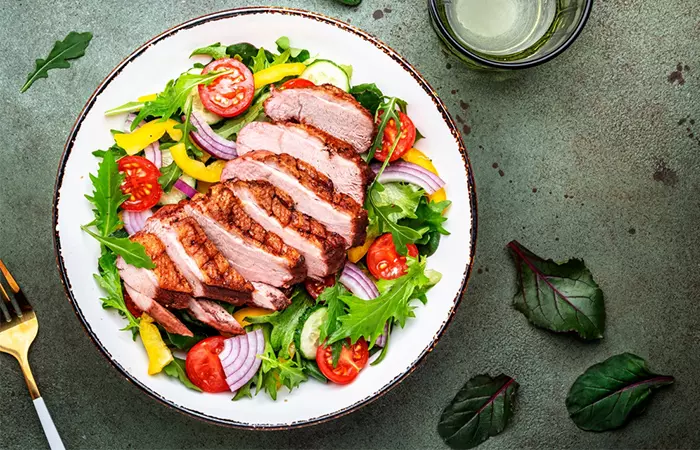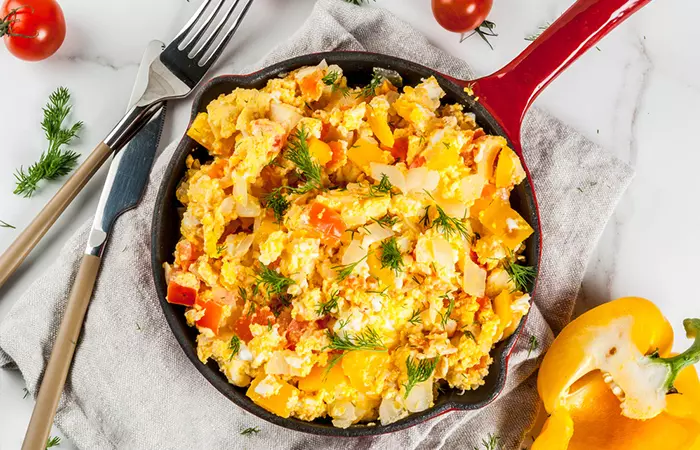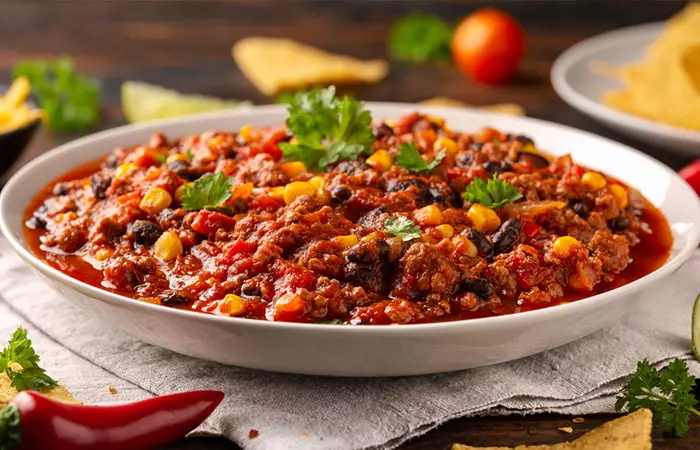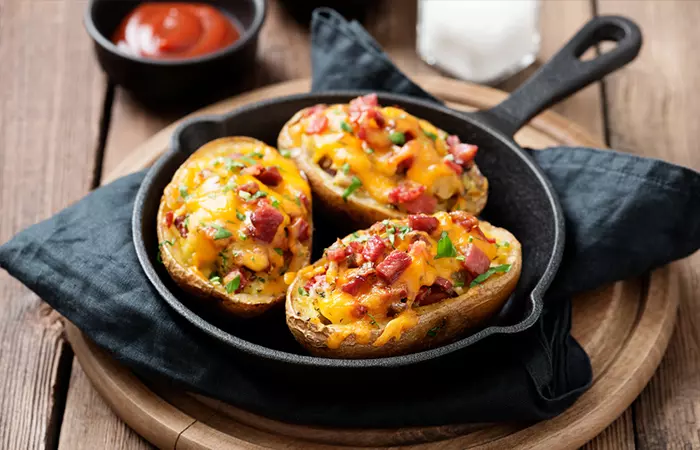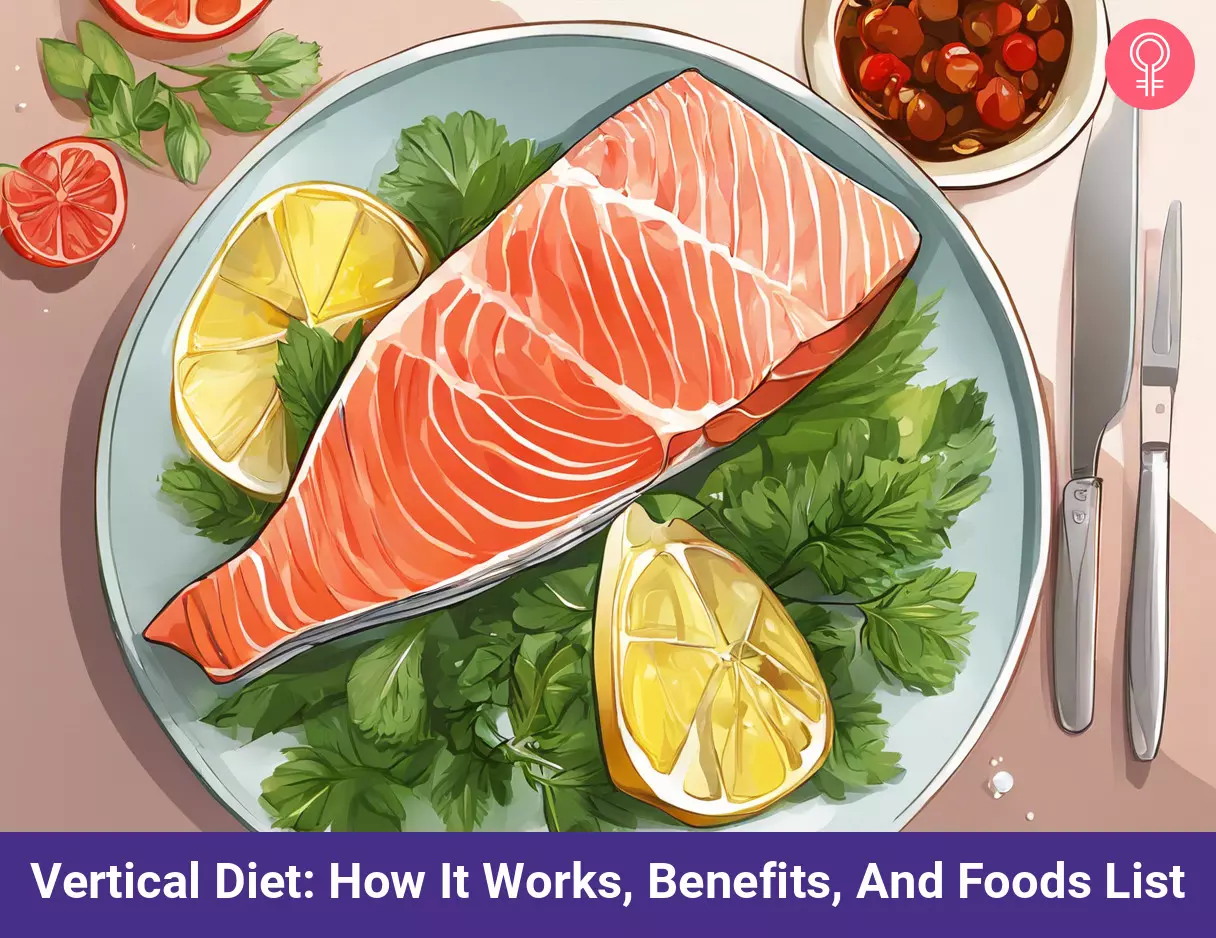But what exactly is the vertical diet, and how does it differ from other popular diet plans? In this article, take a deep dive into the principles, benefits, meal plans, and potential drawbacks of this diet. Keep reading to explore how the vertical diet can potentially reshape your approach to food and nutrition.
What Is The Vertical Diet? How Does It Work?
The vertical diet involves consuming foods that are easy for your body to digest and speed up the nutrition absorption process to deliver the nutrients quickly. This diet was created by Stan Efferding, a professional bodybuilder, and it is all about eating nutrient-dense foods that focus mainly on micronutrients such as vitamins, minerals, and antioxidants. Mary Sabat, Registered Dietitian Nutritionist, says, “The vertical diet is for athletes who engage in intense physical training. It focuses on helping them get enough good nutrition in an easily digestible form. It cuts out all processed foods and focuses on real, nutrient-dense foods. It is not a diet for people who are sedentary, diabetic, etc. but rather for athletes doing heavy training.” The diet gets its name because of how it is structured – like an upside-down T. At the bottom of the inverted T, there are vegetables, dairy, fruits, and starches that provide necessary micronutrients like vitamins and minerals. At the top, there are two foods – white rice and red meat – that provide the macronutrientsi Essential nutrients that make up the bulk of your diet and provide your body with energy in the form of calories. like protein, carbohydrates, and fats. However, the amount of food you need to consume depends on your fitness goals and strength. The diet mainly depends on how many calories you add or subtract from your diet based on your Basal Metabolic Ratei The rate at which your body expends energy (measured in calories) while at rest, in a fasting state. (BMR). You must add more calories based on your BMR to gain weight and subtract calories to lose weight. Through this diet, you can gain or lose weight, improve your workout performance, and achieve better nutrient absorption. Read on to learn more about the benefits of this diet.
Benefits Of The Vertical Diet
- May Aid Weight Loss The vertical diet emphasizes the consumption of nutrient-dense and non-processed foods. Anecdotal evidence suggests that following such a diet may aid digestion, maximize exercise performance, and improve nutrient absorption. With an effective workout, better nutrition absorption, and proper calorie intake, you may experience weight loss.
- May Boost Muscle Gain Following the calorie-surplus of this diet involves increased carbohydrate intake. Diets rich in carbohydrates and calories may help improve muscle mass. At least a 15% increase in energy intake is a must for muscle building (1). This diet plan can form a good base for a bulking diet for professional athletes and bodybuilders who aim to increase muscle mass without compromising digestion or nutrient intake. Additionally, eating carbs before working out may provide energy and enhance athletic performance. Additionally, eating carbs before working out may provide you with energy and enhance athletic performance.
- May Help Ease Digestive Symptoms On this diet, you are recommended to consume low-FODMAPi A group of short-chain carbohydrates and sugar alcohols that are poorly absorbed in the small intestine. foods. This may help reduce digestive symptoms related to irritable bowel syndrome (IBS), such as bloating, pain, and flatulence (2). This may help bodybuilders and athletes deal with gastric issues that may otherwise impair muscle and weight gain by limiting food intake. Now that you know the benefits of following this diet, let us find out how to go follow this diet regimen.
How To Start The Vertical Diet
Calculate your BMR to check the number of calories you should consume daily and the total energy your body burns while at rest. The amount of calories you need to add or subtract is dependent on your training regimen. Determine your appropriate calorie intake by considering your body weight and calculating the grams of protein, fat, and carbohydrates you should consume. As your body adjusts to the diet and starts to feel hungry between meals, you can increase the calories. This may lead to greater muscle gains, quicker recovery, and more intense or frequent training sessions. The best way to increase calories in your vertical diet is to add a portion of white rice or red meat to your meal plan. A 100 g of white rice contains 130 kcal and 28.6 g of carbohydrates (3). As a primary source of carbs, it may help athletes and fitness enthusiasts with very high calorie needs. Red meat is preferred because of its nutrient density and concentration of protein, omega-3 fatty acids, vitamin B12, niacin, zinc, and iron that may aid muscle growth (4), (5). Nonetheless, it may not be possible to fulfill all your micronutrient requirements solely through these two foods. The vertical diet allows a restricted quantity of nutrient-packed, readily digestible items. Scroll down to find out which foods you can include in this diet.
Foods To Eat On The Vertical Diet
Grains: White rice, amaranth, burghul, buckwheat, corn, oats, millet, and quinoa Proteins: Salmon, beef tallow, hormone-free chicken, bison, grass-fed beef, and whole eggs Fruits: All fruits, especially oranges, cranberries, grapes, melons, grapefruits, and strawberries Vegetables: Low-FODMAP vegetables like peppers, spinach, carrots, celery, peppers, and cucumbers Legumes: Soaked legumes and oats (in small quantities) Oils And Fats: Extra-virgin olive oil, butter, avocado oil, coconut oil, and nuts Seeds: Chia seeds, flaxseeds, pumpkin seeds, and sunflower seeds Healthy fats: Full-fat yogurt, whole milk, and cheese Sodium: Bone broth, chicken stock, and iodized table salt
High-quality foods, such as grass-fed meats, free-range eggs, and organic fruits and vegetables, are highly encouraged in this diet. Now, let us find out what you cannot have on this diet.
Foods To Avoid On The Vertical Diet
Highly processed and difficult-to-digest foods are discouraged in this diet. The foods you should avoid include:
Grains: Brown rice, breakfast cereals, unsoaked oats, pasta, bread, and wheat flour Legumes: Unsoaked lentils, soy, peanuts, beans, and peas Oils: Highly processed vegetable oils like corn oil, soybean oil, canola oil, and safflower oil Onions And Garlic: All forms of onion, garlic, and shallots Vegetables: High-FODMAP vegetables like broccoli, kale, asparagus, cauliflower, Brussels sprouts, and cabbage Added Sugar: Candy, soda, pastries, sports drinks, and baked goods Coffee: Regular coffee and decaf coffee Other Beverages: Alkalized water and sugar alcohols Meat: Sausage, salami, and bacon Poultry: Non-organic chicken Dairy Products: Flavored yogurt and heavy cream
While preparing a vertical diet meal plan, you need to carefully analyze all the foods you include and avoid for effective results. Scroll down to the next section for a sample meal plan to get started.
Vertical Diet Meal Plan
Here is a sample menu for the Vertical Diet:
Breakfast: 2 whole eggs scrambled with cheese, red meat, spinach, and a side of berries. You may also have a cup of unflavored Greek yogurt with strawberries, coffee, and full-fat milk. Lunch: 1 cup of white rice with ground bison, bone broth, spinach, peanuts, and sweet potato. You can also have 4 ounces of orange juice. Dinner: Hormone-free chicken (85-115 g) with an egg, roasted carrots, zucchini, and a side of grapes. You may also consume 4 ounces of cranberry juice. Snack: 1 cup of unflavored Greek yogurt with berries, whole milk, or baby carrots.
The number of meals you include in the diet may vary based on your training regimen and calorie needs. Therefore, you need to plan the foods and recipes accordingly. Keep reading to learn a few recipes you can try out while following this diet.
Vertical Diet Recipes
1. Scrambled Eggs With Cheese
Ingredients
2 large eggs 1/2 teaspoon of salt 1/2 teaspoon of pepper 1 teaspoon of olive oil 3 cups of spinach 3 cups of bell peppers 3 cups of shredded carrots 1 tablespoon of mozzarella cheese
How To Prepare
2. Beef Monster Mash
Ingredients
½ tablespoon of olive oil 5½ ounces of sweet potatoes 1 red bell pepper 7 ounces of zucchini 8 ounces of ground beef 1 cup of beef bone broth ½ tablespoon of salt ¼ tablespoon of black pepper ½ teaspoon of oregano ½ teaspoon of paprika ½ teaspoon of cayenne pepper Chili powder to taste
How To Prepare
3. Loaded Sweet Potatoes
Ingredients
2 medium to large sweet potatoes ½ teaspoon of salt ½ teaspoon of black pepper 250 g fresh corn niblets 1 tablespoon of extra virgin olive oil 25 g fresh coriander 1 large ripe avocado Lemon juice as per your taste ¼ teaspoon of chili powder ¼ teaspoon of ground cumin
How To Prepare Incorporating these recipes into your diet plan may help increase your calorie intake. Though the vertical diet can help improve your fitness level, there may also be a few downsides associated with it. Read on to learn about them.
Side Effects Of The Vertical Diet
Reduced Fiber Intake
The recommended dietary fiber intake for children and adults is 14 g/1000 kcal. Adequate fiber intake is not only important for digestion and regular bowel movements, but it may also lower the risk of chronic diseases, including lower risk of developing Coronary heart diseasei A medical condition that occurs when the blood vessels that supply blood to the muscles of the heart become narrowed or blocked. , stroke, Hypertensioni Also known as high blood pressure, a medical condition characterized by elevated or abnormally high blood pressure in the arteries. , diabetes, obesity, and certain gastrointestinal diseases (6). However, the vertical diet does not contain enough fiber.
Reduced Prebiotic Intake
This diet restricts many important sources of Prebioticsi A type of non-digestible dietary fiber that serves as food for beneficial bacteria in the digestive system, particularly in the colon. , such as garlic, onions, and barley that help improve gut health and prevent obesity (7). The lack of prebiotics and fiber in the diet may cause gut problems like constipation, indigestion, and diarrhea.
Increased Risk Of Nutrient Deficiencies
It also lacks diversity of foods and may lead to nutrient deficiencies if not planned properly. Therefore, it is important to consult a dietitian to plan this diet accordingly.
Not Suitable For Vegetarians And Vegans
The diet is not fit for vegetarians and vegans to follow as it focuses on red meat intake and limits vegetable, grain, and legume intake. The vertical diet has captured the attention of those seeking not just to improve weight management but spark an overall boost in their athletic performance and muscle gain. Its focus on easily digestible, nutrient-dense foods is designed to optimize nutrient absorption and enhance athletic performance. The main foods used in the diet to increase calories include white rice and red meat. Along with other easily-digestible and low-FODMAP food that provide sufficient energy required to achieve your fitness goals, However, it’s essential to approach this dietary approach with awareness. While it can yield significant benefits, it may also pose challenges, particularly in terms of fiber and prebiotic intake. Therefore, it is best to consult a nutritionist or dietician to tailor it to your individual needs and goals. How many meals should you have in a day on the vertical diet? The number of meals you have in a day may vary based on your training regimen and calorie needs. However, the supporters of the diet recommend having four meals a day, including breakfast, lunch, dinner, and snack. Can you drink tea on the vertical diet? Mary says, “It recommends restricting certain beverages with caffeine but does not exclude tea for everyone.” Nevertheless, consuming tea may cause gastric troubles (8).
Illustration: Vertical Diet: How It Works Benefits And Foods List
Are you looking for a diet to improve your muscle gain? Watch this video to discover how the vertical diet can help you build muscles with a 2-week diet plan.
